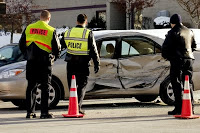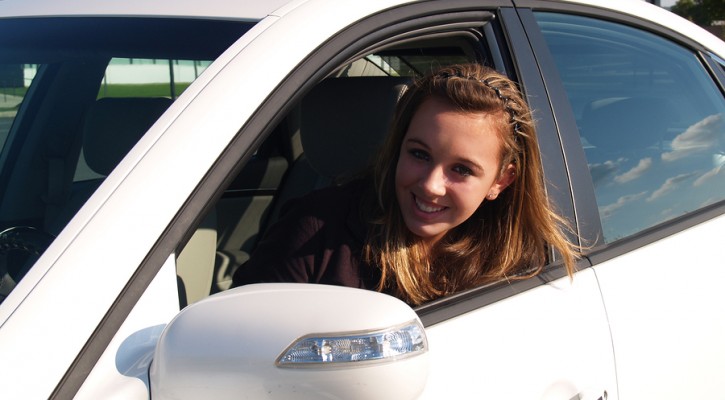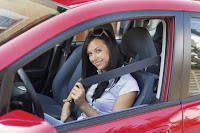Category Archive: Safe Driving

Study Says Teen Drivers in Arizona are Dangerous
December 15, 2006
A recent study by Arizona State University showed that, once again, fatal car accidents are the number one killer of Arizona children in 2005. During that year, 1,148 children under age 18 were killed. The study concluded that teen drivers accounted for much of the loss, which is a shame. Nationwide, car crashes are the top killer of teenagers, so this study is yet more proof that intervention and driver education is needed to help save teen lives.
This study was done by the Center for Health Information and Research at ASU, and about 250 people from the Arizona Child Fatality Review Teams reviewed statistics to come up with the study numbers. More shocking than the number of children killed is the fact that many of these deaths were preventable. The study also revealed that one third of the children, or 388, died under circumstances that were preventable.
ASU research center medical director Dr. Mary Rimsza states, “Parents need to supervise their kids and make sure they are using their restraints, driving safely and making sure they have enough driving experience.” Recommendations for parents include: setting consequences for teens (and enforcing them), showing support for the strengthening of graduated-licensing laws, and making sure their children are safe behind the wheel before allowing them to drive without an adult present.
With many teens involved in drug and alcohol abuse, reckless driving, and failing to wear seat belts, fatal car accidents are only going to continue. By being aware of the statistics, and taking action, parents can help save their child’s life and perhaps the lives of others as well. According to the numbers offered up by the ASU study, the lives of up to 400 children each year can be saved by taking preventative measures when it comes to letting your teens drive.

At Risk Teen Drivers are STOPPED in Michigan
November 30, 2006
AAA of Michigan and the Michigan Sheriffs’ Association have brought a great program to 27 counties in the state aimed at risky teenage drivers. This program, called STOPPED, or Sheriffs Telling Our Parents & Promoting Educated Drivers, was created in order to help prevent many of the fatal accidents that young drivers are at a high risk for being involved in. The goal of the program is to address reckless behind-the-wheel behavior by involving parents, as well as law enforcement, in the ongoing process of learning to drive in Michigan.
Many teens feel that once they pass drivers’ education and receive their permit, that they are declared safe drivers. This certainly isn’t the case, and is proven year after year as fatalities involving teenage drivers and passengers increase across the country. What this program does is help avoid these tragedies by catching risky behavior before it gets out of hand. Parents who do not ride with their children while they are driving may not get a chance to see if there are any risky behaviors going on in the vehicle, such as having a large number of passengers. This is where the STOPPED program comes into play.
Vehicles enrolled in the free and voluntary program are registered in a database. If a driver under the age of 21 is pulled over in that vehicle, for any reason, a completed notification card is sent home to the parents. Information such as why they were pulled over, where they were, and how many passengers were in the vehicle are all relayed to the parents of the new driver. This allows the parents to address these issues immediately, in an effort to reduce any further risk-taking behavior while driving.
The pilot program started in March of 2005, with just seven counties statewide participating. With the recent addition of 20 more counties in the State of Michigan, it is quickly becoming a success. Though the program is voluntary, many parents are finding this a great addition to the other safety precautions they have taken in making sure their children are safe on the road. Now if only other states would follow the lead of Michigan, and do their part to help cut risky driving behavior in teens.

Safety on the Road for Teens
November 15, 2006
As teens, we think we know it all, but we don’t. Based on the number of fatal accidents caused by teenage drivers each year, we don’t know some things – like how to drive safely. In “Driving Tips for Teens,” a video presentation that is offered by Allstate Foundation and its partners, there are some startling statistics. The one statistic about teens being 400% more likely to die in a car crash than someone who is in their mid-twenties to mid-thirties should really put a damper on your enthusiasm to go joy-riding with some friends after school.
Luckily, there are a few things we can do to help avoid being a statistic. We’ve all heard the importance of avoiding aggressive drivers and getting out of their way, or defensive driving. We also know that we should buckle our seat belts, keep our hands on the wheel (at all times!), and not talk on cell phones, eat or drink while driving. However, many teens are still doing this. It is also very important to mind the speed limit at all times – they really are there for a reason!
One of the most important things for all drivers to remember is to never drink and drive. Drinking impairs our ability to think straight, and for a teenager or other young, experienced driver, this can spell disaster. Distraction and a reduced ability to react are recipes for a fatal accident. This is another reason why it is never recommended to drive while you’re angry. When your emotions are so strong, your mind is distracted.
The site also mentions a driving program called TeenSmart. It helps parents of teen drivers work with their kids in meeting all the state driver’s licensing requirements without the heated discussions and arguments. There is also cool video and computer based training sessions that teenagers can take that puts us through the paces of what we would likely encounter on the roads. This is just another great tool to help teenagers get experience, increase their skills, and gain additional driving privileges – especially while they are practicing for their driver’s license test.

Teen Driving Fatalities During After School Hours
October 31, 2006
Listen up, parents. If you were worried about teenagers driving on the weekend nights with their friends, you’ll have new reasons to monitor teen driving after reading a recent press release by AAA. According to new research, teens are just about as likely to get into fatal accidents while driving during after school hours.
Teen drivers had 1,237 fatal accidents between 2002 and 2005 when driving on Friday and Saturday nights. But, what’s surprising is that there were almost just as many fatal accidents for weekdays between 3 and 5 p.m. – 1,100 in total. That means they’re not much safer being limited to driving to and from school each day.
What can you do to help your teen driver avoid a fatal accident? Here are a few suggestions giving by AAA that may help save your teens life.
- While most states have laws that limit the number of passengers a new teen driver may have, make sure this law is a family rule. The more passengers a new driver has, the more likely they are to be involved in an accident.
- Keep your teen from using the cell phone while driving, even the hands-free type. Even an experienced adult driver has trouble driving while talking on the phone.
- Make sure your teen uses their seatbelt each time they ride in the car. Though teens feel invincible, we certainly are not. Teens have the highest crash rates, but yet the lowest rates of seatbelt usage.
- Finally, make sure other adults in the family know the ground rules set. Tell the parents of your teen’s friends, or even your neighbors. If everyone keeps an eye on your teen’s driving habits, they are less likely to bend the rules and put themselves at a greater risk of a fatal accident.
If there are laws in your state limiting the hours your teen may drive, or the number of passengers they may carry while they are new to driving, you may feel your teen is much safer than others are. However, laws are still broken, so always monitor your teens driving and keep the ground rules firm. For more information, read the Department of Highway Safety and Motor Vehicles Driver Education Handbook for Parents.

Are You a Road Ready Teen?
October 16, 2006
Most teens have heard from their parents that driving is a big responsibility and that we have to earn it. This comes with a lot of eye rolling on our parts and impatience at getting those car keys in our hand. Well, the fact of the matter is, our parents have a point. Fatal car accidents are the number one killer for teenagers and other young drivers under 25 years of age.
As teenagers, it is important to ask ourselves what have we as done exactly to earn the driving privilege we feel we are owed? Are we paying the gas, insurance, and car payment that enable us to drive? Most teens are not doing any of those things. We perhaps will automatically assume that we will get driving privileges the moment we get our driver’s permit.
For us teenagers, a sure-fire way to prove that we can handle the responsibility of driving is by taking the “Road Ready Teens” driving program that is presented by DaimlerChrysler. Let’s face it – teens as a whole are not proving to the adults that they are ready for the road. Young drivers are inexperienced and have a high rate of fatal car crashes.
This program has a number of aspects that are actually quite interesting and informative. As teens, we can learn many things to help us become better drivers, keep the roads safe and our parents happy.
There are a few driving schools that offer this type of program, but this video game is the first of its kind. It will simulate road risks you may encounter, and test you to figure out how you would handle your car. For instance, it may simulate a blown tire to see if your first reaction is to swerve (not good), or to calmly guide your vehicle to the side of the road.
Trust me; you don’t want to learn these driving tips by experience, so playing the video game is a good idea. You can even email your friends and issue challenges to try to beat your score, which puts the fun back into learning to drive.
